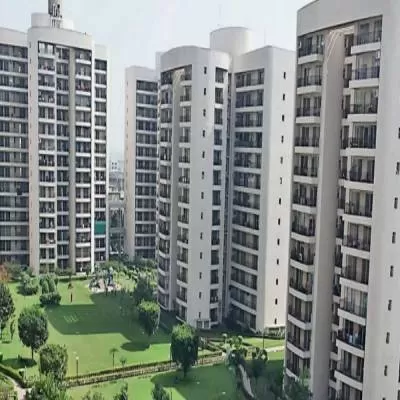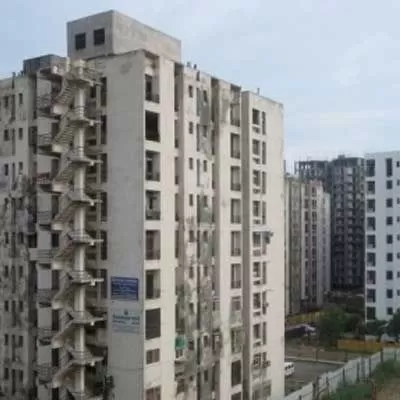- Home
- Real Estate
- Resetting Real Estate in Gujarat
Resetting Real Estate in Gujarat
Read full article
CW Gold Benefits
- Weekly Industry Updates
- Industry Feature Stories
- Premium Newsletter Access
- Building Material Prices (weekly) + trends/analysis
- Best Stories from our sister publications - Indian Cement Review, Equipment India, Infrastructure Today
- Sector focused Research Reports
- Sector Wise Updates (infrastructure, cement, equipment & construction) + trend analysis
- Exclusive text & video interviews
- Digital Delivery
- Financial Data for publically listed companies + Analysis
- Preconceptual Projects in the pipeline PAN India
- Gujarat’s Chief Minister
- Gujarat
- Chief Minister
- Gujarat Atmanirbhar Package
- Atmanirbhar
- Vijay Rupani
- affordable houses
- interest subsidy
- Pratap Padode
- Balbirsingh Khalsa
- Viren Mehta
- JLL
- Knight Frank (India)
- Taral Shah
- Shivalik Infrastructure
- Paras Pandit
- Sheetal Infrastructure
- Dilip Ladani
- Rajkot Builders Association
- Electrotherm
- Housing.com
- Gujarat Real Estate
- Developers
- affordable housing
- affordable segment
- sales
- sales velocity
- Chandkheda
- Bopal
- Nikol
- Vastral
- Nava Naroda
- Gujarat RERA
- Ahmedabad developers
- major Ahmedabad developers
- construction market
- migrant labour
- real estate projects
- migrant labour
- developers
- margin
- unskilled labour
- real estate prices
- UltraTech
- Ambuja
- JK Lakshmi
- major cement manufacturers
- cement manufacturers
- supply
- ceramics
- steel companies
- ET TMT
- Residential units
- GST
- RERA
- Demonetisation
- NBFC
- working capital
- cash flows
- labour issues
- Gujarat’s real estate market
- Inventory
- loss of demand
- Foreign direct investments
- FDI
- Maharashtra
- Tamil Nadu
- Andhra Pradesh
- ease of doing business
- manufacturing
- manufacturing units
- ease of doing business
- Gujarat Government
- real estate transactions
Recently, Gujarat’s Chief Minister Vijay Rupani unveiled a Rs 140-billion ‘Gujarat Atmanirbhar’ Package – a rescue plan for the industries and businesses. The features of the package include a big push for the real estate sector, with a Rs 10-billion allocation as subsidy for 1.6 lakh affordable houses in the state including Rs 5.25 billion of interest subsidy on loans up to Rs 2.5 lakh availed by shop owners and small business owners. Apart from this, one lakh homeless tribal worker beneficiaries will get concrete houses in their native places with a total allocation of Rs 3.50 billion. But there are multiple issues affecting the industry. Construction World organised a free webinar on ‘Resetting Real Estate in Gujarat’ with a distinguished panel of experts to discuss and deliberate on this topic. The webinar began with presenter Pratap Padode, Editor-in-Chief, Construction World, welcoming the guest panellists to the session. The panellists included industry stalwarts – Viren Mehta, Senior Director, JLL; Balbirsingh Khalsa, National Director-Industrial & Logistics and Branch Director-Ahmedabad, Knight Frank (India); Taral Shah, Managing Director, Shivalik Infrastructure; Paras Pandit, Chief Managing Director, Sheetal Infrastructure; and Dilip Ladani, Chairman, Ladani Group and Vice President, Rajkot Builders Association. The webinar was sponsored by Gold Partner Electrotherm and supported by Knowledge Partner Housing.com. The impact and expectations The Gujarat real estate industry has also suffered a big blow as has the rest of the country on account of the pandemic, said Padode on an opening note. As per Housing.com’s report dated March 2020, developers remained cautious of launching new projects due to the liquidity crises. The affordable housing segment has led to a progressive trend in sales for the last few years. For instance, Ahmedabad sold approximately 68 per cent in the affordable segment (of less than Rs 45 lakh) in 2019. Unsold inventory decreased by 15 per cent over the previous quarter due to steady sales velocity. Notably, 26 per cent of Ahmedabad’s unsold inventory is in the ready-to-move-in segment. Over 67 per cent of the unsold stock is concentrated in the affordable segment. Interestingly, prices remained stable in the mid to high segment – Chandkheda, Bopal, Nikol, Vastral and Nava Naroda were the most active micro markets – which contributed 35 per cent of the total sales in 2019. Notably, in the beginning of May, not a single migrant labourer was reported to work at the construction sites of a leading real-estate developer in Ahmedabad. And, real-estate players in Gujarat feared that relaxations provided would stall works in the sector. Commenting on how the pandemic and the lockdown has affected the sector in terms of deliveries, Shah highlights that the Gujarat RERA given six month extension for the projects, which he feels is sufficient time as major Ahmedabad developers normally keep between 3-3.5 years timeline for projects. “There is also a buffer of three months and we now have these six months. So overall, we have nine months extra for construction, so we don’t see much delays.” He adds that major Ahmedabad players started with 30 per cent labour post the lockdown. Adding that the Gujarat construction market largely depends on migrant labour, he believes that work will regularise same as pre-COVID in the next two to three months. The Gujarat RERA Authority had about 6,746 projects along with 1,111 agents registered until mid March, and has extended the completion deadlines for real estate projects in the state by six months. According to Pandit, the real estate sector in the state was in a bad shape even before the pandemic and the lockdown cannot be blamed for the state of the sector alone. “There was panic even before the lockdown, and now the panic has also added in the form of labour issues and finances.” Besides, there will be an increase in labour cost as well as finances. According to him, government uncertainties and policies related to migrant labour were a major issue. “Developers not only in Gujarat but across India will have to play their own parts and do things by themselves to revive the sector as nothing much can be expected from the government.” Reduction in real estate prices Speaking about Union Minister Piyush Goyal and HDFC Chairman Deepak Parekh’s comment to developers to reduce prices, adds Mehta, “What was meant is for inventory lying unsold, for which developers are themselves paying interest, that inventory should be considered for reduction.” But the question remains: How can prices be reduced when the cost of construction is not? Commenting further, questions Khalsa that if the developers sell at a lower price, where is the margin for the developers? I doubt there is enough margin for the developer to be given as discount by him, as far as Gujarat is concerned. Supply chain challenges Speaking about challenges in terms of supply of materials, Ladani confirms there is definitely a challenge in this area. “Real estate construction requires the application of more than 100 materials. So, after the lockdown, whatever material was on site, we used the same materials for about 15 days. Since there was less production of materials, we had less supplies too. Then there was also the challenge of transportation, leading to less activity on construction sites. Adding to this, the challenge of skilled and unskilled labour.” He adds that there is no question and scope of real estate prices coming down. Shah, on the other hand, has a different opinion. He avers that Gujarat has all the major cement plans – UltraTech, Ambuja, JK Lakshmi, among others. He cites a report which highlighted that major cement manufacturers had supplied more in the rural areas of Gujarat in May 2020 than they had in May 2019. He adds that Gujarat also has some good steel companies like Electrotherm (ET TMT). “Their supply was constant and we did not face any issues in terms of supply for our projects.” Speaking about ceramics too, he says that Morbi is a ceramic hub and so ceramics supply was not an issue too. “The problem was with labour.” Launches Residential units launched in Gujarat in 2018-19 stood at 145,000 units and in 2019-20 has reduced to 137,000 units – a 6-per-cent decrease in the number of units being launched. Specifically speaking about Ahmedabad, there was a surge of 17 per cent – 45,000 units launched in 2019-20 as against 38,000 units launched in 2018-19, as per RERA. “There is a slight decrease in the number of commercial units, in terms of the square feet – in 2018-19 it stood at 7 million sq ft and in 2019-20 it has come down to 6.50 lakh sq ft – a reduction of 7 per cent in commercial projects” says Mehta. The total projects registered under RERA is about 7,200 – of this about 32 per cent falls in Ahmedabad and about 80 per cent is only residential, and about 65-70 per cent of this falls under the affordable range. Mehta adds that real estate has seen lesser launches even before COVID. “We had the NBFC issues and prior to that GST, RERA, Demonetisation...” He adds that RERA’s guidelines are stringent, and so, the B category and C category developers are just wiped out of the system. “The bigger challenge that developers are facing is the demand, followed by the working capital and cash flows, and labour issues. This is even prior to COVID.” Gujarat’s Atmanirbhar Package Speaking about Gujarat’s Atmanirbhar Package, Pandit believes there is not much effect for the real estate fraternity. “There are already affordable schemes in Gujarat’s real estate market, and with people facing salary cuts, I do not see much of an effect of the Atmanirbhar on the state’s realty market.” According to Mehta, from the Rs 140-billion package for Gujarat, there is not much for real estate. And so to expect a big boost for the sector from this package is something to question. He adds that by and large, “the government has done too little although it has been taking proactive measures but this doesn't have a larger impact that you can boost the economy.” Shah does not see a huge loss of demand in the future in Gujarat as inventory is coming down too. Foreign direct investments Notably, Gujarat secured the top position viz domestic investments committed to the country as well as reported a stellar growth in FDI in 2019-20. Even as other industrialised states such as Maharashtra, Tamil Nadu, Andhra Pradesh, etc, reported an overall drop in FDI last year, Gujarat’s FDI grew by a staggering 240 per cent – the highest among Indian states. Khalsa, speaking on the NRI purchases in Gujarat, avers that the state stands at No. 4 in terms of FDI in India. “We need to maintain this number in Gujarat. This will come with government measures in terms of ease of doing business and promoting industries so that more people invest in the manufacturing units and add Capex.” There is a growth of about 10-11 per cent CAGR in NRI investments in India – which is much bigger than the private equity investments coming in. The ecosystem of Gujarat is well established and so the state will continue to attract NRI investments, adds Khalsa. Overcoming demand issues Demand is definitely a problem. The Gujarat Government is considering a proposal to reduce stamp duty and registration fees on real estate transactions, which are among the major contributors to the state’s revenue. When asked if measures such as these will boost real estate demand, Khalsa urges the government to take these two steps to bring back demand. He also suggested a reduction in interest for home loans and measures to encourage people to invest in a second home. Developers in Gujarat are also working on several marketing and sales strategies to attract customers to invest in properties. Evidently, demand is the major issue, said Padode on a concluding note. “But as long as we can reduce the fear and improve the prospects of things getting back to normal, the demand will definitely rise. But probably, the government also needs to step in and offer some reliefs wherever they can help push the demand up.” For this and more on Resetting Real Estate in Gujarat, watch the full video. Also check our webinar on ‘Building Safety and Efficiency Post COVID-19’ here. Also check our webinar on ‘Will PM Modi's economic package revive Indian businesses?’ here. Also check our webinar on ‘Smartening Port Development’ here. Also check our webinar on ‘Construction Technologies Post COVID-19’ here. Also check our webinar on ‘How Asian Cities are Coping with COVID-19’ here. Also check our webinar on ‘Roads to Recovery’ here. Also check our webinar on ‘Infrastructure: National Infrastructure Pipeline – the Rs 102 trillion opportunity’ here. Also check our webinar on ‘The Real Estate Challenge’ here. Also check our webinar on ‘The Architect Challenge’ here. Stay tuned for Construction World’s FREE webinars. View our complete webinar calendar and previous webinars here.




















